

Plastic bottles

Our bottles go to UK based companies for reprocessing. Here, they undergo three stages to turn them into pellets, ready to be used again within the manufacture of new plastic products, such as drainage pipes, watering cans or new bottles.
Stage 1: Sorting and granulation.
The bottles are sorted by machinery to remove any contamination, such as paper. It is then sent to granulators to be ground into small, evenly sized flakes.
Stage 2: Washing and further polymer segregation.
After granulation, the flake passes through a cyclone to remove excess dust and labels. The remainder of the contaminants (e.g. glue, labels, sand and grit) are removed through a hot wash process. Through a combination of friction washing, sink float chambers and screens, contaminants are loosened and cleaned off and the caps and labels are separated as a floating fraction.
The water and flakes are heated to approximately 95°C, starting the food grade sterilisation process. The clean flake then passes through driers and an air classification system, removing yet more fine waste and residues.
Stage 3: Extrusion
This is the final stage of the process. Flake is fed into a heater, which rotates and heats it up for at least 60 minutes, causing the flake to melt.
It is then extruded through a number of screens and a rotary die, to create a pellet which is cooled by water.
Pellets are sold into the manufacturing market where, in the case of bottles, the pellets are then used to make preforms-the first stage of new bottles.
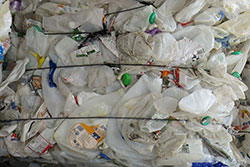
Natural HDPE bottles separated and baled ready for reprocessing.
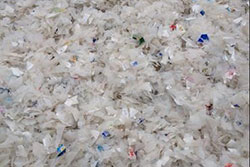
HDPE flakes
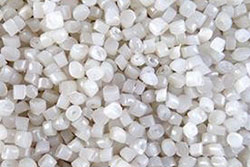
HDPE pellets
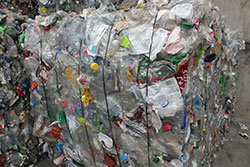
PET bottles separated and baled ready for reprocessing.
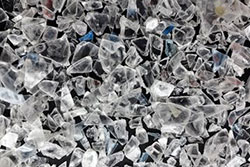
PET flakes
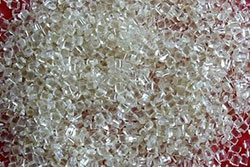
PET pellets